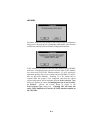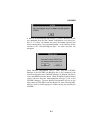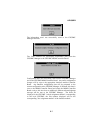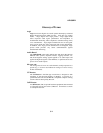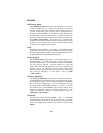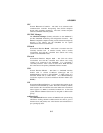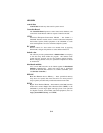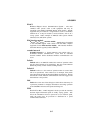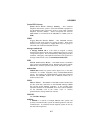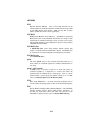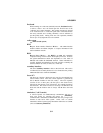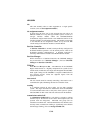LBI-39224
G-3
CEC
C
onsole
E
lectronics
C
ontroller – The CEC is an advanced radio
communications controller incorporating time division multiplex
digital audio switching technology. The CEC connects dispatch
consoles to EDACS and CNI systems.
CEC/IMC Manager
The
CEC/IMC Manager
(formerly referred to as the "MOM PC")
provides CEC/IMC monitoring and configuration functions. This
IBM PC compatible computer running custom software developed by
Ericsson is the window into the CEC/IMC for the system
administrator and service technicians.
CI Board
C
onventional
I
nterface
Board
– This board is located in the CIA
secondary interface rack. It contains circuitry used to connect
conventional tone and DC controlled base stations and voting
systems to the CEC/IMC switch.
CIA rack
C
onventional
I
nterface
A
dapter
rack
– The CIA rack allows
conventional tone and DC controlled base stations and voting
systems to be connected to the CEC/IMC. It is considered a
"secondary interface" since it does not have direct TDM and GSC
bus connections to the primary CEC/IMC interface modules.
CIM
C
onsole
I
nterface
M
odule – The CIM is a CEC/IMC interface
module used to connect C3 Maestro (CRT-type) and C3
Modular/Desktop consoles to the CEC/IMC. A CIM consists of a
Controller Board and an Audio Board. A C3 Modular/Desktop
console also requires a C3 Console Translator interface module. (See
XLTR
.)
CNI
C
onventional
N
etwork
I
nterface – A conventional base station can be
connected to the CEC/IMC by a CNI. The CNI is formed by a GETC
shelf located at the conventional station that makes the conventional
station appear to a MIM as an EDACS trunked site. In the CNI
system, different Channel Guard tones are assigned to different talk
groups.
confirmed call
The
confirmed
call
function ensures all EDACS radio systems being
called have working channels available before the caller is given a
channel access (talk permit) tone. This function can be disabled on a
per system/group basis.




